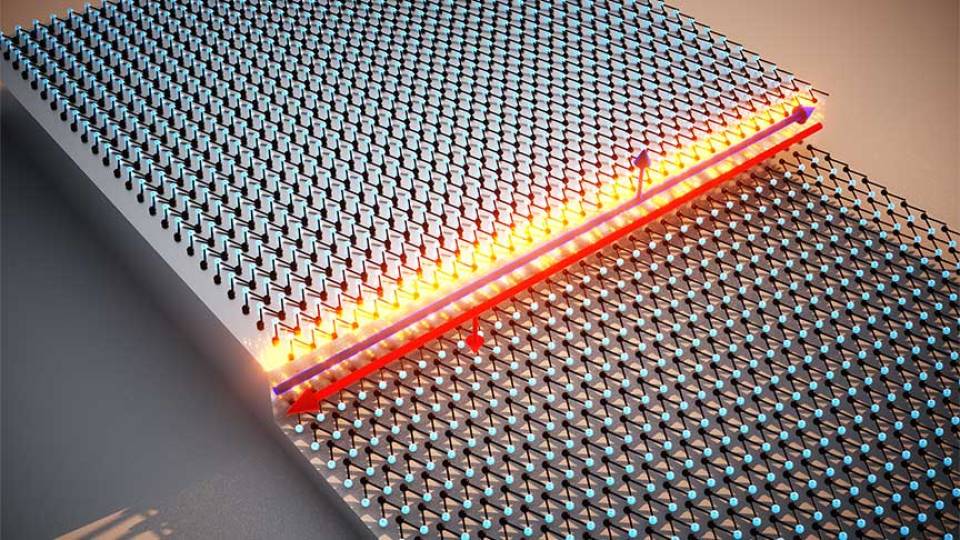2016 Nobel Prize in Physics to F. Duncan Haldane, the Eugene Higgins Professor of Physics at Princeton University
Comments:
Philip Anderson, the Joseph Henry Professor of Physics, Emeritus, 1977 Nobel Laureate in Physics, and Haldane's graduate adviser
"It is a very good group [of Nobel prize recipients], and it came as a complete surprise for me, but I have for several years in the back of my mind that Duncan really deserved the prize because of the absolutely fundamental nature of his work. It underlies a lot of what is going on in the field of condensed matter physics recently. It is a very well-deserved prize. I also worked very closely with David Thouless so I am very happy with that prize. It is absolutely a wonderful choice.
"It has seemed to me that many of the exciting things that have been happening in physics are in the condensed matter field, particularly in theory, and it has been wonderful that so many things have been happening. In particular, the area of topological materials has been very much at the forefront for the last half-dozen or more years, and this has attracted the attention of people outside the field. … There has been a real explosion of exciting new results, but the fundamentals were laid by Thouless and Haldane."
B. Andrei Bernevig, professor of physics
"Duncan had a big effect on me in terms of his way of doing physics. He just does physics to enjoy it. There is nothing he enjoys more than to work 14 to 18 hours a day just doing physics. For me, it was a new way to think about how to do physics — for nothing else than pure enjoyment.
"Duncan and I would have these marathon sessions where we would talk about physics for six or seven hours straight. Often his wife would call around 7:30 p.m. and he would tell her he was coming home. Then he would get stuck in front of the blackboard working through another problem and another hour would pass, and she would call again, and he would say, 'Yes, I'm coming. I'm on my way to the elevator.' And then another three hours would pass until finally I would say, 'Duncan I don't want your wife to get mad at me,' and eventually we would go home.
"The way he thinks about things is unlike any other person — his process is highly uncommon, which is probably why he came up with so many of the amazing things he has. He does not come up with things in consecutive order — it is in flashes of brilliance.
"Topological insulators is now one of the biggest fields in physics, one of the biggest in condensed matter physics. Because of his work, a lot of new materials have been discovered and I think this research will lead to new materials being developed. I have hope that we'll have a materials revolution in a similar way that we had a revolution with the transistor in the '40s and '50s. There is huge promise to this area of research."
Robert Cava, the Russell Wellman Moore Professor of Chemistry, whose research group has created materials based on Haldane's theoretical models
"Duncan is in a class of really, really exceptional scientists, and he thinks on a plane that is far above a plane where I can think. What is wonderful about Duncan is he tries very sincerely to explain what he thinks to people when he talks to them. He is very sincerely trying to explain his theoretical ideas to someone who is in a way different field, which is making materials. What I have always found exceptional about Duncan is the degree of sincerity with which he explains his ideas to people who are not experts.
"Our business is turning these ideas into materials, and Duncan came to talk to me 15 or 20 years ago when he wrote his paper on the topological physics of honeycomb lattices or something like that, and was asking me if I could think of a way to put it in a material. I think it is one of those cool conversations you have in life with people.
"This is what I do for a living — I translate these great ideas that people have into a material so that their ideas can be expanded on. We have a great group of experimental physicists here who can translate the work of theoretical physicists like Duncan.
"The trick is always that the theorist has some ideas about a new type of physics that they want to see, and it is usually above my head, and some experimental physicist will explain it to me, and then we try and make something that demonstrates the idea.
"Often they find some surprise — the theorist points us in a direction and you never know where it is going to lead. It is a beautiful kind of three-way thing with the theorists and the experimentalists and the materials makers."
M. Zahid Hasan, professor of physics
"This is pretty exciting news for the community working on topological states of matter in condensed matter physics. This is recognizing the early work in this field.
"These ideas may be abstract, but you can find a topological insulator in a rock, that is, in naturally occurring materials as well as ones we make in the lab. I can point to a piece of rock and tell you that these are topological. These Nobel laureates created a revolution in condensed matter physics, in materials science."
Yu Shen, graduate student in physics
"I feel exhilarated. Professor Haldane has done numerous original and profound works in various subfields of condensed matter, and winning the Nobel Prize, I would say to some extent, is just a matter of time. But still I was surprised when seeing the news and felt lucky and honored by being one of his current students. I even joke with my friends, 'This might be the closest I can be to a Nobel Prize in my lifetime!'
"Professor Haldane is both experienced and hard working. Sometimes, you feel you cannot contribute anything, but he will explain his ideas to me again and again, no matter how many times he’s already done it, and provide alternative routes I could go down and explore. These have helped tremendously in my academic development."
Shivaji Sondhi, professor of physics
"Today's Nobel honors three of the seminal contributors to the "topological revolution" in Physics generally and my own field of Condensed Matter Physics in particular. In CMP we spend a lot of our effort trying to understand the new properties that emerge when lots of microscopic constituents are put together to create matter in aggregate. Prior to Duncan's work, our understanding of such matters was based on ideas that go under the name of "broken symmetry" which came from the work of people such as Lev Landau and our own Phil Anderson. Thanks to the work of Duncan and his intellectual descendants, we now know that much more subtle properties can emerge and the last decade has seen these insights really flower in the discovery of systems such as "topological insulators." So now there are many phases of matter that we have found whose existence was not suspected earlier. Intellectually, this has opened a new universe of possibilities in CMP and materials science.
"Duncan is first and foremost, brilliant. Very few people have the capacity to surprise you with new insights as he does. He is an inspiration to all of us in the energy, focus and care that he brings to his intellectual work every day and is showing no signs of slowing down. He is also one of the nicest people I know and has a delightful sense of humor that he hides very well. Finally, he has perfected the art of appearing to be barely competent at administrative work which is further evidence of his genius!"
Ali Yazdani, the Class of 1909 Professor of Physics
"It is great to see Duncan being recognized and the others as well, it is terrific for us and terrific for the field. … He is your prototypical theoretical physicist and absentminded professor but what is amazing about Duncan is he is always ahead of his time, and he has always been. It is great to see him being recognized. There has been a flurry of recent activity that builds on his work."
Jie Wang, graduate student in physics
"I think my supervisor certainly deserves the Nobel Prize. He is a giant in our field (condensed matter theory), and has numerous groundbreakings. Just to name a few, his 'Haldane spin chain,' 'Haldane honey comb model' are the precursors of topological phase which has been one of the mainstreams in modern condensed matter physics. Besides that, he has countless fundamental breakthroughs on fractional quantum hall effect. More than 30 years past, he still constantly has fundamental contributions to his field.
"I am currently working on fractional quantum hall effect with him together with another postdoc in our group. Specifically we are studying composite fermion state at half filling, both theoretically and numerically.
"Discussing with him has always been enjoyable and inspiring. We meet weekly and every time it is more than three hours. He is energetic, full of enthusiasm and is patient to students. What is more, during the discussions, he always brings his deep thoughts, inspiring conjectures as well as detailed calculations to us. From him, I gradually realized that to be a good physicist, brave ideas and detailed work, none of them could be omitted. 'How to do physics' is probably what I will learn from him in the future."





